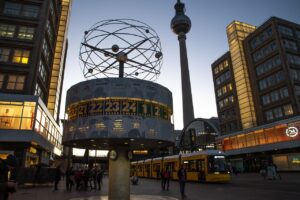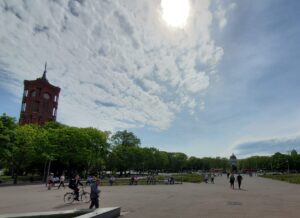The Berliner Dom stands grandly as both a historic landmark and a lively cultural venue. Not only is the Dom the largest Protestant church in Germany, it’s also a hub for inspiring events that blend history, music, and culture that can really enrich your stay in the capital.
Great Events in 2025 at the Dom
This year we have the International Organ Summer with a series of organ concerts such as «Ganz orchestral!» and «Inspiration Bach!» that highlight the cathedral’s magnificent Sauer organ. The famous Regensburger Domspatzen choir will perform in November, and Beethoven’s Ninth Symphony is scheduled for December.
If that weren’t enough, in December 2025 the cathedral will host family-friendly performances of Bach’s Christmas Oratorio, including fun sing-along concerts, perfect if you’re looking for a joyful and memorable musical adventure.
Now, if you’re at the Dom enjoying a concert, you won’t be the first. The famous 19th century composer Felix Mendelssohn conducted orchestral concerts here. In November 1842, Mendelssohn was appointed Generalmusikdirektor for church music at the Berliner Dom. He was responsible for directing the choir and orchestra and creating new works for services.
A large-scale concert is scheduled for October 18, 2025, featuring his famous oratorio Elias (Elijah), Op. 70. This masterwork is performed by the Berliner Dom Choir and the Brandenburg State Orchestra Frankfurt, which promises to be a powerful performance.
Whether you attend a concert or go as a visitor, remember that below your feet rest most of the old Hohenzollern dynasty that once ruled Prussia and then Germany. The Dom thus houses one of Europe’s most important royal burial sites, the Hohenzollern crypt, where nearly 100 sarcophagi from five centuries lie.
Fun Facts
Something little-known even to Berliners is that while the Dom is often referred to as a cathedral, it is technically not one. Unlike typical cathedrals, it is not the seat of a bishop, but rather a parish church and the former royal family’s dynastic church. Today’s version was finished under Kaiser Wilhem II in 1905, and was built to boast his family’s prestige on the world stage and help elevate Berlin to the ranks of London, Paris, and St Petersburg. You can be the judge of how well he succeeded!
You can still trace war damage on the cathedral by heading to the side of the church facing the busy road, and you’ll see plenty of shrapnel holes. But a rarer war relic is hiding in plain sight on the other side. Stand outside the church facing it, head up the stairs to the main landing, then turn left and walk to the far end, towards the museum. At the end, you’ll find an information stand with bullet holes still stitched across the face, a reminder of the city’s less spiritual past.




